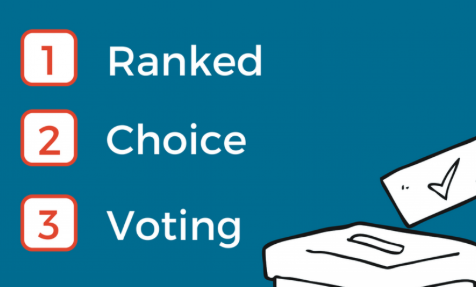The Article below was published in Vol. 135, Issue 6 of the Lake Forest College Stentor on March 6, 2020.
By Nathaniel Bodnar ’21
Staff Writer
The biggest problem with the current primary system is that in 2016 it produced two very polarizing candidates. The current Democratic front-runner, Bernie Sanders, is an incredibly polarizing candidate, in part because he has only recently joined the party. While many people like these candidates, it seems that many people also hate these candidates. In 2016, Republicans had a failed “never-Trump” movement and now the Democratic establishment seems to be starting a similar campaign against Senator Bernie Sanders (I-VT). I propose that we modify our current voting procedures during the primary elections and move to a ranked-choice ballot system in order to find a more agreeable candidate.
Ranked-choice voting operates by ranking the candidates in order. This part seems self-explanatory. Next, if no candidate reaches 50 percent through first-choice votes, the worst performing candidate is taken out. The people who had the bottom candidate will have their second-choice candidate counted, instead. This cycle will continue until someone reaches the 50 percent threshold. This cycle is also called an instant runoff voting system.
For the purpose of partisan primaries, I wish to change some features of this system. People would still rank the candidates in preferential order. Instead of doing an instant runoff, I propose that each slot would count as a set number of points. If there were 10 candidates, the one you ranked first would receive 10 points; second, nine points; third, eight points; and so on. At the end of the day, a candidate could consistently be the second or third choice, but still win. On that same note, a candidate who won a plurality of first-place votes might lose because they are deeply unpopular outside their fan base and receive the most last-place votes.
I think this could have multiple positive effects on our country. The first would be that it would be significantly harder for polarizing candidates to win. The other is that the level of discourse would increase during primary debates.
I doubt that President Trump would have won under this system in 2016 because he was hated by a large swath of the party, and they would have put him last on their ballots. Someone like Governor John Kasich (R-OH), who was likable enough but not incredibly popular, could have won. Similarly, in 2020, this system could benefit someone like Senator Amy Klobuchar (D-MN). Although Senator Klobuchar does not have a large fan base, she does not have very many enemies. She and former Governor John Kasich both would be good general election candidates because they can better appeal to moderate swing voters who either do not want to or are not allowed to participate in partisan primaries.
This system would also elevate the level of discourse in primary debates and campaigns. For example, when then-candidate Trump mocked Senator Marco Rubio (R-FL) as being a “little guy,” Rubio’s supporters could have hurt Trump by putting Trump last on their ballots. Candidates would be incentivized to avoid attacking each other in order to avoid the wrath of the opposing fan base at the ballot box. As a result, candidates would need to focus on policy issues during the campaign and candidates who deviated from this would be punished at the ballot box.
I think this is a promising reform that can help bring more palatable and less divisive candidates to the general election. This reform can help cut down on the hateful rhetoric directed at opposing candidates and make politics more bearable to watch. My hope is that candidates in this system could help the country heal and end the polarization that increasingly makes political opponents real-life enemies worthy of condescension.
Nathaniel Bodnar can be reached at bodnarnm@mx.lakeforest.edu


